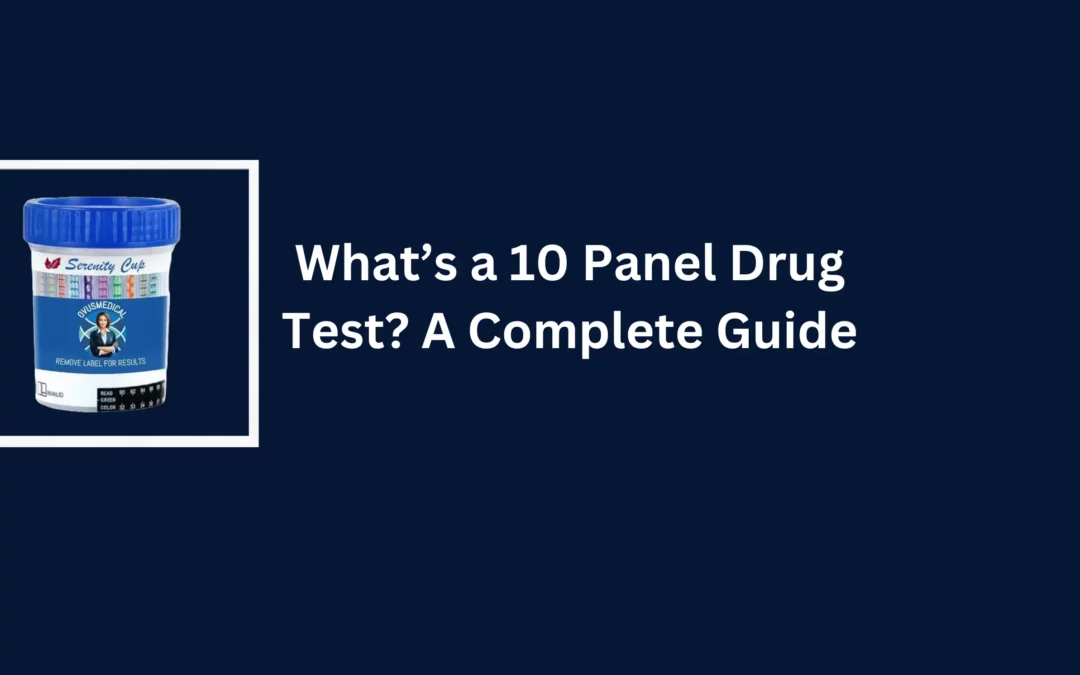Drug testing has become an essential tool for many employers, healthcare professionals, and legal institutions. One of the most comprehensive and widely used drug screening methods is the 10-panel drug test. This test screens for ten common substances, providing a broad overview of an individual’s drug use.
Whether you’re an employer aiming for a drug-free workplace or someone preparing for a test, understanding the 10-panel drug test can help you navigate the process more effectively.
What’s a 10 Panel Drug Test?
A 10-panel drug test is a screening method designed to detect the presence of ten specific drugs in a person’s system. These substances are typically tested through urine, but saliva, hair, or blood samples can also be used in some cases. The substances tested generally include:
- Amphetamines (e.g., methamphetamine)
- Cocaine
- Marijuana (THC)
- Opiates (e.g., heroin, morphine)
- Phencyclidine (PCP)
- Barbiturates
- Benzodiazepines
- Methadone
- Propoxyphene
- Methaqualone
This wide spectrum of substances makes the 10-panel drug screening test one of the most comprehensive options for detecting various forms of drug use.
Why is the 10-Panel Drug Test Used?
The 10-panel drug test is commonly used in various sectors, including:
- Employment Screening: Many companies require a 10-panel drug test to ensure a drug-free workplace, particularly in safety-sensitive industries like transportation or construction.
- Rehabilitation Programs: Rehabilitation centers use the 10 panel drug screen to monitor patients’ progress and ensure they are staying clean.
- Legal Proceedings: Courts may mandate a 10 panel drug test for individuals involved in custody disputes, probation, or other legal matters.
- Healthcare: Doctors may request this test to diagnose or monitor substance abuse, particularly in pain management settings.
What Does a 10 Panel Drug Test Detect?
The 10-panel drug test can detect various classes of drugs, including:
- Amphetamines: These are stimulants often used to treat ADHD but are also misused recreationally.
- Cocaine: A powerful stimulant that’s illegal for recreational use.
- Marijuana (THC): While legalized in some areas, marijuana use is still tested for in many industries.
- Opiates: Prescription painkillers like oxycodone, as well as illicit drugs like heroin.
- Phencyclidine (PCP): A dissociative drug that can cause hallucinations and violent behavior.
- Benzodiazepines: Prescribed for anxiety or insomnia but frequently abused.
- Barbiturates: Used for anesthesia or seizure disorders, these can be addictive when misused.
This variety allows the 10 panel drug test to offer a comprehensive look at a person’s recent drug use, generally over the last 1-3 days for urine-based tests.
FAQs About 10 Panel Drug Test
1. What does a 10 panel drug test detect?
A 10-panel drug test detects ten common substances, including marijuana, cocaine, opiates, amphetamines, benzodiazepines, barbiturates, methadone, propoxyphene, PCP, and methaqualone.
2. How long do drugs stay in your system for a 10-panel drug test?
Detection windows vary by drug and test type. For most substances, a urine-based 10-panel drug test can detect usage within the last 1-3 days, though some drugs may be detectable for longer periods.
3. How much does a 10 panel drug test cost?
The cost of a 10-panel drug test ranges from $30 to $100, depending on whether it’s an at-home test or lab-administered test.
4. How accurate is a 10 panel drug test?
A 10-panel drug test is highly accurate, especially when conducted in a certified lab. At-home tests also provide reliable results if used correctly.
5. Where can I get a 10 panel drug test?
You can get a 10-panel drug test at pharmacies, clinics, or online at specialized providers like Ovusmedical, which offers a range of testing products including saliva, urine, and multi-panel tests.



